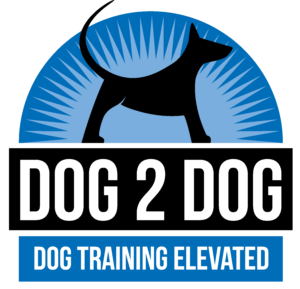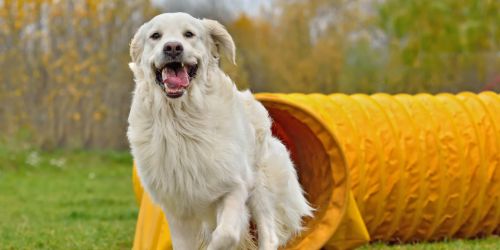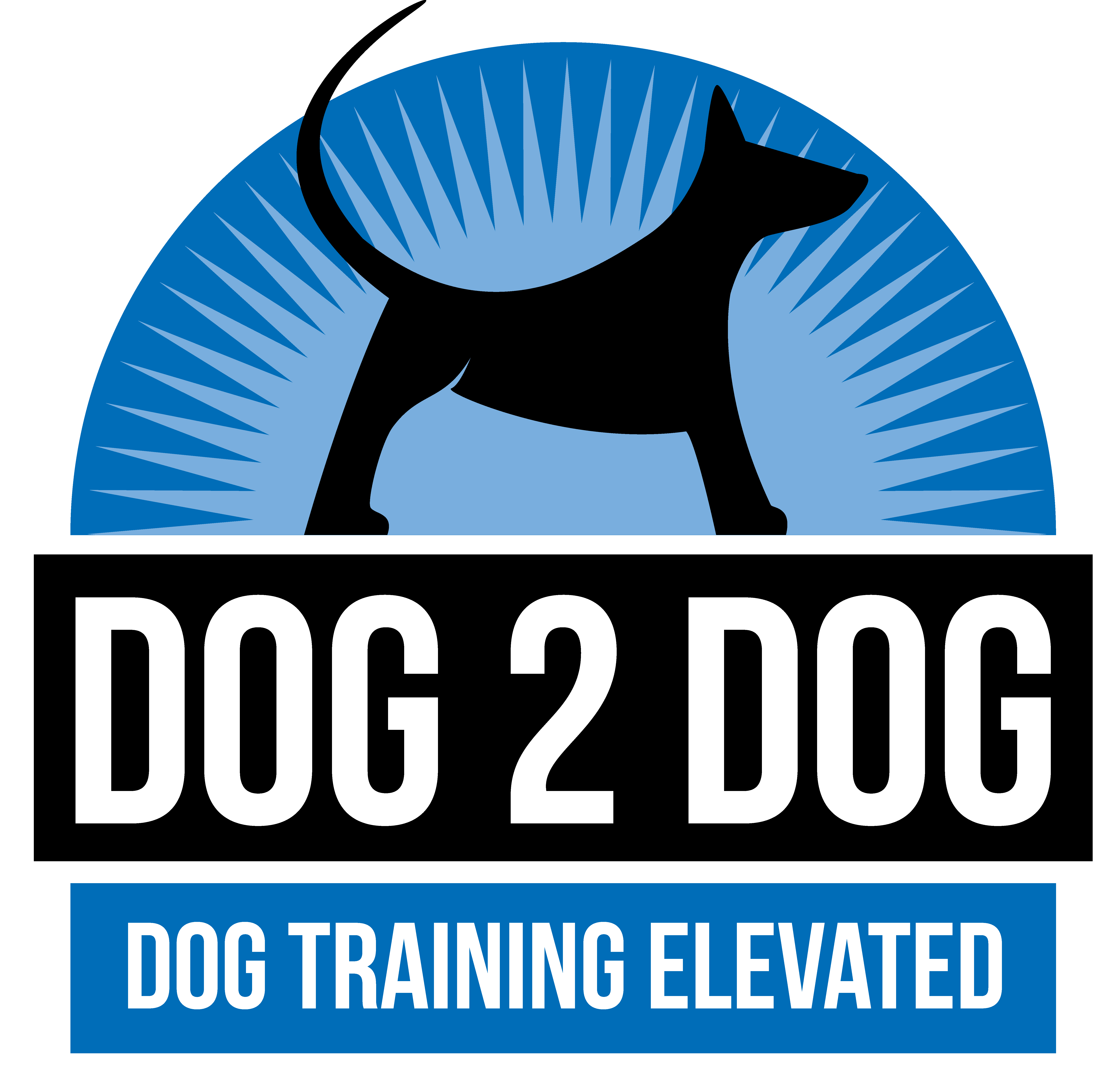
In-Kennel Training: The Proven Method for Effective Dog Training

In-kennel training is a specialized form of dog training where your furry friend stays at a professional training facility for an extended period, ranging from a few days to several weeks, during which your dog receives intensive, one-on-one training from certified professionals.
Training isn’t merely an optional indulgence; it’s essential. A well-trained dog is not only easier to handle but also happier and more secure. Offering mental engagement for your dog and gaining a deeper understanding of their needs contribute to a more peaceful and harmonious home life.
This comprehensive guide will delve into the various aspects of in-kennel training. We’ll discuss what it entails, why a proper handover from the trainer to the owner is crucial, the numerous benefits it offers, and share some real-life scenarios where in-kennel training made a significant difference in the dog’s and the owner’s lives.

What is In-Kennel Training?
In-kennel training is a specialized form of dog training in which your pet stays at a professional training facility for an extended period, usually from a few days to several weeks. During this time, your dog receives intensive, one-on-one training sessions from certified professionals, all within a controlled environment designed for optimal learning.
What sets in-kennel training apart from other training methods is the level of intensity and focus it offers. Unlike traditional training methods where the owner is often actively involved, in-kennel training allows for a concentrated training regimen without the owner’s presence. This is particularly beneficial for busy owners or for addressing specific behavioral issues that require expert attention. The controlled setting also ensures that the training is consistent and free from distractions that may occur in a home or public setting.
The scope of in-kennel training is quite broad, covering everything from basic obedience commands like “sit,” “stay,” and “come” to more complex behavioral modifications such as managing aggression or alleviating separation anxiety. Depending on the dog’s needs and the owner’s goals, the program can include specialized training modules like socialization exercises, leash training, and even agility training.
Effective In-Kennel Training
One of the most critical aspects of in-kennel training is the “handover” process. This is when the trainer transfers the knowledge and techniques used during the training to the owner. The handover is essential because it ensures the owner understands what the dog has learned, why it’s essential, and how to reinforce these behaviors and skills at home. Without a proper handover, the effectiveness of the in-kennel training could be compromised, as the owner might inadvertently undo the training or fail to reinforce it adequately.
How to Continue Using the Correct Techniques at Home
The handover process typically includes a detailed briefing from the trainer, complete with demonstrations and possibly even video tutorials. Written guidelines may also be provided for the owner’s reference. During this time, owners are encouraged to ask questions and may even participate in a few practice sessions under the trainer’s guidance. This ensures that the owner is fully equipped to continue the training at home, using the correct techniques to maintain consistency and effectiveness. It’s all about empowering the owner to be an active participant in their dog’s ongoing education and well-being.
Benefits of In-Kennel Training
Consistency in Training
One of the standout benefits of in-kennel training is the consistency it offers. The training is more uniform and effective because your dog is in a controlled environment with a set schedule and professional oversight. This consistency is crucial for reinforcing positive behaviors and correcting undesirable ones.
Time-Saving for Owners
In-kennel training is a boon for busy dog owners who may not have the time to attend regular training sessions. With professional dog training, you can go about your daily routine without worrying about fitting in training sessions, knowing that your pet receives high-quality instruction.
In-kennel training often includes group activities or controlled interactions with other dogs, providing valuable socialization opportunities. This is especially beneficial for dogs that may not have many chances to interact with their peers, helping them become more well-rounded and comfortable in various social settings.
Furthermore, in-kennel training offers some unique advantages that set it apart from other training methods. For instance, the intensive nature of the program allows for quicker mastery of skills, and the professional guidance ensures that any behavioral issues are addressed with expert techniques. Moreover, the handover process equips owners with the knowledge and tools to continue effective training at home, making it a comprehensive solution for long-term dog well-being.
What to Expect in In-Kennel Training
Initial Assessment
Before the training begins, an initial consulting session is usually conducted to evaluate your dog’s behavior, temperament, and specific training needs. This assessment helps our trainers at Dog 2 Dog tailor a program that will be most effective for your dog, ensuring that the time spent in the kennel is productive and beneficial.
Daily Routine
In-kennel training programs often have a structured daily routine to provide consistency, which is crucial for effective learning. This routine typically includes designated times for training sessions, meals, playtime, and rest.
Training Sessions
The core of the in-kennel experience is the training sessions. These sessions, conducted by certified professionals, focus on various skills and behaviors, from basic commands to more complex behavioral modifications. The one-on-one nature of these sessions allows for personalized attention, ensuring that your dog’s specific needs are addressed.
Playtime
While training is the primary focus, playtime is also an essential component of the daily routine. This allows your dog to unwind, enjoy some physical exercise, and practice social skills in a controlled environment.
Rest Periods
Adequate rest is crucial for effective learning and overall well-being. Designated rest periods are built into the daily routine, giving your dog time to relax and recharge for the next training session.
Progress Reports
Most in-kennel training programs provide regular progress reports to keep you updated on your dog’s development. These reports may include details on the skills learned, behavioral improvements observed, and any challenges encountered. Some facilities may even offer video footage or live streaming options so you can see your dog’s progress in real time.
Preparing Your Dog for In-Kennel Training
Health Check-ups
Before enrolling your dog in an in-kennel training program, it’s essential to schedule a comprehensive health check-up with your veterinarian. This ensures that your dog is in good health and up-to-date on all vaccinations, often required for admission into reputable training facilities. Discuss any medical concerns or behavioral issues with your vet to ensure in-kennel training suits your pet.
Packing Essentials
When preparing for in-kennel training, you’ll need to pack some essentials for your dog’s stay. This usually includes food, medications your dog may take, and a few comfort items like a favorite toy or blanket. Some facilities may have specific requirements or provide some items, so checking beforehand is a good idea.
Emotional Preparation
The emotional well-being of your dog is just as important as their physical health. Spend quality time with your pet before the training period to help ease any separation anxiety they may experience. You can also start acclimating your dog to shorter periods of separation to make the transition to the training facility smoother. Some owners find it helpful to visit the facility with their dogs beforehand to familiarize them with the new environment.
Common Concerns & How to Address Them
Separation Anxiety
One of the most common concerns about in-kennel training is the potential for separation anxiety, both for the dog and the owner. To mitigate this, consider a gradual approach by leaving your dog for a shorter period at the facility or another trusted location. This can help acclimate both you and your pet to the separation. Additionally, the facility offers progress reports or live video feeds to keep you updated, providing peace of mind.
Cost
In-kennel training can be more expensive than other training options due to the intensive, one-on-one attention your dog receives. However, the benefits often justify the cost, especially for addressing specific behavioral issues or for busy owners who can’t commit to regular training sessions. To manage costs, inquire about payment plans or discounts and consider the long-term value of a well-trained dog.
Effectiveness
Another concern is the effectiveness of in-kennel training, especially given the investment of time and money. The key to effectiveness is a proper handover process, where the owner learns how to continue the training at home. Make sure to choose a reputable facility with certified trainers and a solid handover process to ensure the training will have a lasting impact.
Example Scenarios/Stories
Real-life Example of a Dog That Benefited from In-Kennel Training
Meet Bella, a two-year-old Labrador Retriever who struggled with leash pulling and basic obedience. After a two-week stay in an in-kennel training program, not only did Bella master the basic commands like “sit,” “stay,” and “come,” but she also learned proper leash etiquette. Her owner, Sarah, was thrilled with the transformation and found the handover process incredibly helpful for continuing the training at home.
A Story of How In-Kennel Training Solved a Specific Behavioral Issue
Max, a four-year-old German Shepherd, had severe separation anxiety. His owners, the Johnsons, decided to try in-kennel training as a last resort. Max showed significant improvement after a three-week program that included specialized behavioral modification techniques. The
Johnsons were provided with a detailed handover, including strategies to reinforce the training at home, and Max’s separation anxiety has been much more manageable since.
Case Study of a Dog That Learned Advanced Skills
Lucy, a one-year-old Border Collie, was already well-behaved, but her owner, Tim, wanted her to learn advanced skills like agility training and complex commands. Through a specialized in-kennel training program, Lucy was able to master an agility course and learn commands that are useful for herding, a natural instinct for her breed. Tim was amazed at how quickly Lucy learned these advanced skills and was grateful for the comprehensive handover that allowed him to continue the specialized training at home.
Conclusion
In this comprehensive guide, we’ve explored various facets of in-kennel training, from what it entails and its unique advantages to how to prepare your dog for the experience. We’ve also addressed common concerns and shared real-life examples to illustrate the transformative power of this specialized training method.
In-kennel training offers a focused and intensive approach to dog training that can yield remarkable results in a relatively short period. The controlled environment, expert guidance, and structured routine provide an optimal setting for dogs to learn and thrive. Moreover, the handover process equips owners with the knowledge and tools to continue effective training at home, making it a comprehensive solution for long-term dog well-being. Whether you’re grappling with specific behavioral challenges, aspiring to teach your dog advanced skills, or simply focusing on basic obedience, a facility like Dog 2 Dog offers in-kennel programs that are both practical and effective. The investment of time and resources is often justified by the enduring improvements in your dog’s behavior, leading to an enhanced quality of life for both you and your pet.

Socialization Opportunities for Dogs